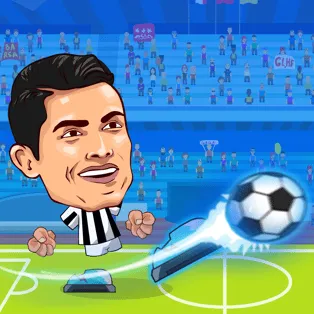When Death Note first hit the pages of Weekly Shonen Jump in 2003, few could have predicted the seismic impact it would have on the manga landscape. Created by writer Tsugumi Ohba and artist Takeshi Obata, this dark psychological thriller pushed the boundaries of what a shonen series could be, forever altering expectations for the genre. Let’s explore how Death Note revolutionized shonen manga and left an indelible mark on the medium.
A Bold Departure from Shonen Conventions
Death Note broke new ground by eschewing many of the typical shonen tropes and formulas. Gone were the superpowered martial arts battles, tournament arcs, and plucky underdog heroes striving to be the best. In their place was a cerebral cat-and-mouse game between two genius antagonists – the morally corrupt Light Yagami and the eccentric detective L.
The series centered on Light, a brilliant but bored high school student who discovers a mysterious notebook that allows him to kill anyone by writing their name. Drunk on his newfound power, Light embarks on a misguided crusade to rid the world of criminals and shape a new society with himself as its god. This sets him on a collision course with L, the world’s greatest detective tasked with uncovering the identity of the vigilante killer known as “Kira”.
By focusing on psychological warfare and battles of wit rather than physical combat, Death Note Manga demonstrated that shonen manga could tell sophisticated, mature stories while still being thrilling and accessible to young readers. It paved the way for more cerebrally-oriented shonen series to follow.
Morally Gray Characters and Complex Themes
Perhaps Death Note’s most revolutionary aspect was its morally ambiguous protagonist. Light Yagami begins as an idealistic student, but his possession of the Death Note gradually corrupts him. As the story progresses, Light becomes increasingly ruthless and megalomaniacal in pursuit of his twisted vision of justice.
This was a stark departure from the typical shonen hero archetype of a pure-hearted underdog fighting for good. Light’s descent into villainy forced readers to grapple with complex ethical questions about justice, power, and human nature. Can murder ever be justified for a “greater good”? At what point does idealism become fanaticism?
The series didn’t provide easy answers, instead challenging readers to form their own moral judgments. This mature, nuanced approach to storytelling expanded the thematic scope of what shonen manga could explore.
A New Kind of Rivalry
The central conflict between Light and L also subverted shonen rivalry tropes. Rather than clashing physically, their battle was purely intellectual – a high-stakes game of deduction, misdirection, and psychological manipulation. Their dynamic crackled with tension despite (or perhaps because of) the lack of traditional action scenes.
Both Light and L were portrayed as deeply flawed individuals whose single-minded pursuit of their goals often veered into obsession. This shades-of-gray characterization was far more psychologically complex than the straightforward hero vs. villain dynamics typical of shonen at the time.
Innovative Visual Storytelling
While Death Note’s writing and themes were groundbreaking, Takeshi Obata’s artwork was equally revolutionary in how it elevated the storytelling. Obata’s hyper-detailed, realistic art style lent weight and gravitas to the high-stakes mind games between Light and L.
Most notably, Obata pioneered new ways of visually depicting the characters’ thought processes and deductions. Elaborate montages would break down Light or L’s chains of logic, with each deductive leap represented by striking visual metaphors. These sequences turned abstract mental battles into gripping, cinematic set pieces.
Iconic Character Designs
Obata’s character designs for Death Note have become truly iconic, inspiring countless imitators. L’s disheveled appearance and odd mannerisms made him instantly memorable and set the template for the “quirky genius” archetype in manga. Meanwhile, the skeletal shinigami Ryuk, with his perpetual Cheshire cat grin, remains one of the most striking supernatural designs in manga history.
By demonstrating how artwork could enhance psychological storytelling, Death Note expanded the visual vocabulary of shonen manga. It paved the way for more experimental and avant-garde artistic approaches in mainstream series.
Cultural Impact and Legacy
Death Note’s popularity and critical acclaim made it a true cultural phenomenon, both in Japan and internationally. It consistently topped manga sales charts and spawned a hit anime adaptation, live-action films, video games, and more. The series’ success proved there was a huge appetite for more mature, cerebrally-oriented shonen stories.
This opened the floodgates for a new wave of shonen manga that pushed genre boundaries. Series like The Promised Neverland, Assassination Classroom, and Platinum End (also by the Death Note creators) followed in Death Note’s footsteps by centering on psychological conflicts and morally gray characters. Even more traditional action-oriented shonen began incorporating more complex themes and storytelling.
International Influence
Death Note’s impact extended far beyond Japan. As one of the first major manga hits of the digital age, it played a huge role in popularizing the medium with international audiences. For many Western readers, Death Note was their gateway into the world of manga.
The series’ blend of supernatural elements, detective fiction tropes, and psychological thrills proved to have universal appeal. It demonstrated that manga could tell sophisticated stories on par with any other storytelling medium. This helped elevate the global perception of manga from niche interest to mainstream art form.
Redefining Shonen Demographics
By tackling mature themes with nuance and depth, deathnotemanga.com expanded conceptions of what constituted a “shonen” series. While still ostensibly aimed at teenage boys, its complex narrative and moral ambiguity appealed strongly to older readers as well.
This demographic expansion had major ripple effects on the manga industry. Publishers began to see the potential in creating more sophisticated shonen works that could retain readers as they aged into adulthood. The line between shonen and seinen (young adult) manga became increasingly blurred.
Today, it’s common to see shonen series deal with weighty philosophical concepts or feature morally conflicted protagonists. Death Note demonstrated that young readers were capable of engaging with mature storytelling, forever raising the bar for the genre.
A New Standard for Villains
Death Note’s portrayal of Light Yagami as a charismatic antihero/villain protagonist was truly groundbreaking for shonen manga. Light’s gradual corruption and descent into megalomania was portrayed with psychological depth rarely seen in the genre before.
This complex characterization raised the bar for antagonists in shonen manga. No longer could villains be one-dimensional embodiments of evil. Readers now expected more nuanced motivations and moral ambiguity from antagonists. Many subsequent shonen series have featured villains with tragic backstories or seemingly noble goals achieved through evil means.
Critiques and Controversies
Of course, Death Note’s boundary-pushing nature was not without controversy. Some critics argued that the series glorified vigilante justice or sent problematic messages about power and morality. The manga’s dark tone and high body count also sparked concerns about its appropriateness for younger shonen readers.
These debates highlighted the growing pains as shonen manga matured to tackle more adult themes. Death Note forced the industry and readers alike to grapple with questions of age-appropriateness and moral responsibility in storytelling.
There were also criticisms of how the series lost momentum in its second half following a major plot twist. However, even this demonstrated Death Note’s trendsetting nature – the challenges of maintaining narrative tension after a game-changing twist is now a common topic of discussion for long-running manga.
Inspiring a New Generation
Perhaps Death Note’s greatest legacy is how it inspired a generation of manga creators to push boundaries and think outside the box. Many of today’s most acclaimed mangaka cite Death Note as a formative influence that showed them new possibilities for storytelling.
Series like The Promised Neverland, Assassination Classroom, and Bakuman (also by Ohba and Obata) have carried Death Note’s torch by blending genres and tackling mature themes within a shonen framework. Meanwhile, hit series like My Hero Academia and Jujutsu Kaisen have incorporated elements of psychological warfare and moral ambiguity into more traditional action-packed narratives.
By demonstrating that shonen manga could achieve both commercial success and critical acclaim with sophisticated storytelling, Death Note emboldened creators to take more risks. The medium as a whole has become richer and more diverse as a result.
Conclusion
Nearly two decades after its debut, Death Note’s influence on the manga landscape remains profound. By pushing the boundaries of what shonen manga could be, it paved the way for more mature, complex, and experimental works to flourish within the genre.
From its morally gray characters to its cerebral storytelling to its striking visuals, Death Note challenged and expanded reader expectations at every turn. In doing so, it elevated the artistic ambitions of the entire medium and helped manga gain greater mainstream acceptance worldwide.
While countless series have followed in its footsteps, Death Note’s combination of addictive thrills and philosophical depth remains unmatched. It stands as a true watershed moment – the series that proved shonen manga could be so much more than anyone had imagined.
How did Death Note impact your own manga reading journey? Did it change your expectations for shonen series? Share your experiences in the comments below!





























